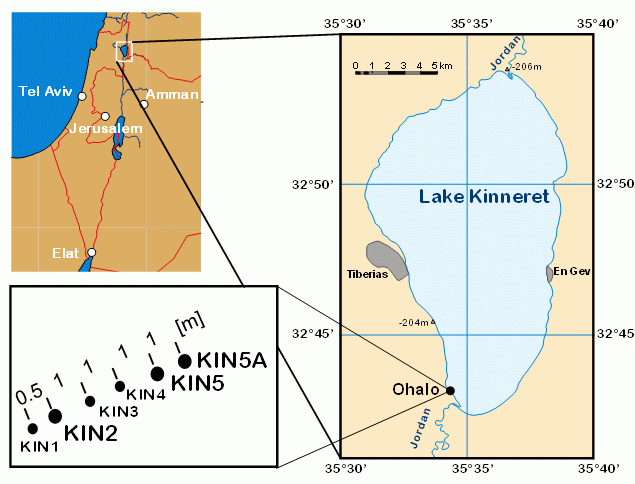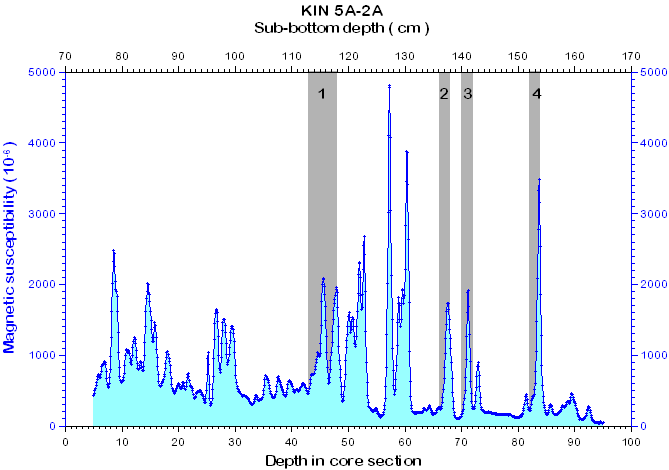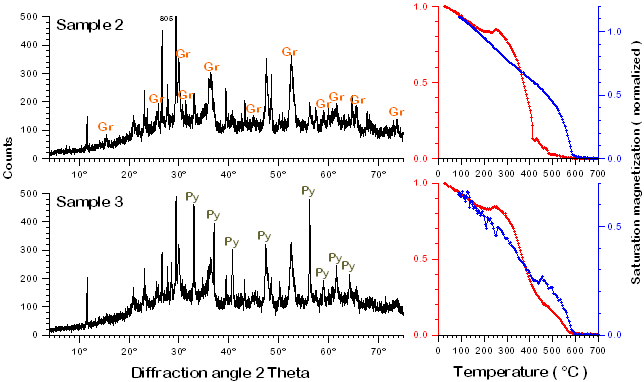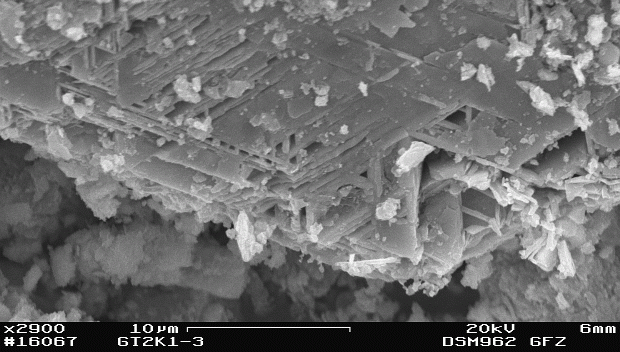Magnetostratigraphy of late-glacial Sediments from Lake Kinneret, Israel
During a low-stand of Lake Kinneret, at the shore near Ohalo, an archeological site from pre-historic times became visible. Close to that site several sediment cores of up to 8.8 m length were recovered by the GFZ Potsdam in 1999.
Age determinations by AMS 14C revealed that the recovered sediments represent the time span from about 20000 to 40000 years before present. Thus they appeared as an ideal archive for the reconstruction of geomagnetic paleo-secular variation for that time window. However, the magnetostratigraphic analyses showed finally that the sediments are massively altered by early-diagenesis. That means, that the primary detrital magnetization, carried by Iron (Titanium) oxides (mainly Magnetite Fe3O4), has been replaced mostly by secondary Iron sulfides of unknown age. Besides non-magnetic Pyrite (FeS2) magnetic Greigite (Fe3S4) could be found.
The dominance of Greigite as the magnetization carrier in the recovered sediments could also be proved by, besides standard mineralmagnetic measurements, X-ray diffraction and thermomagnetic analyses using magnetic extracts.
Magnetic extracts were also imaged with scanning electron microscopy and were subjected to energy dispersive X-ray analyses. This gave further prove of the results from all other analyses that (Titano-) Magnetites were massively dissolved and were replaced by subsequently formed Iron sulfides.
In summary, the results from Lake Kinneret sediments turned out to be the clue for the understanding and detection of early-diagenetic dissolution of Magnetite and the formation of secondary Iron sulfides in lake sediments.
Partner: Prof. Hagai Ron, Hebrew University, Jerusalem, Israel







